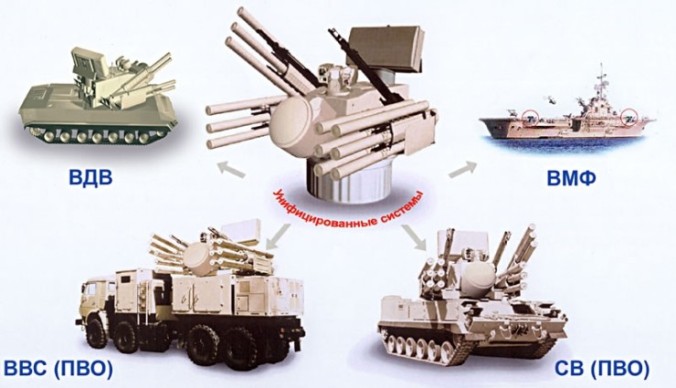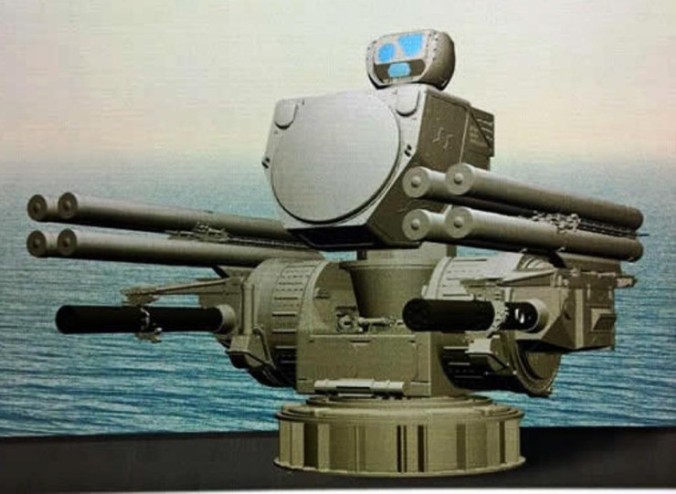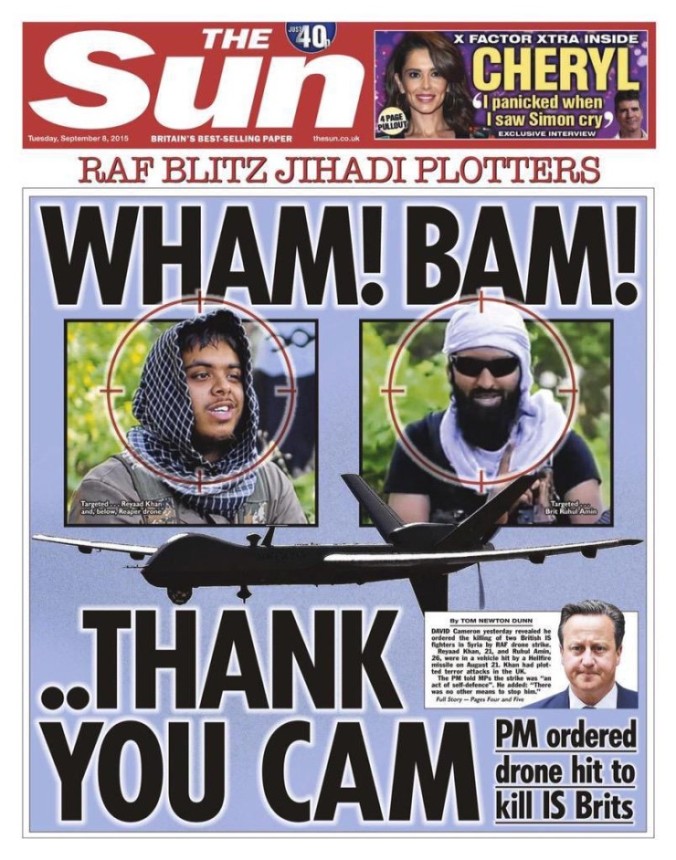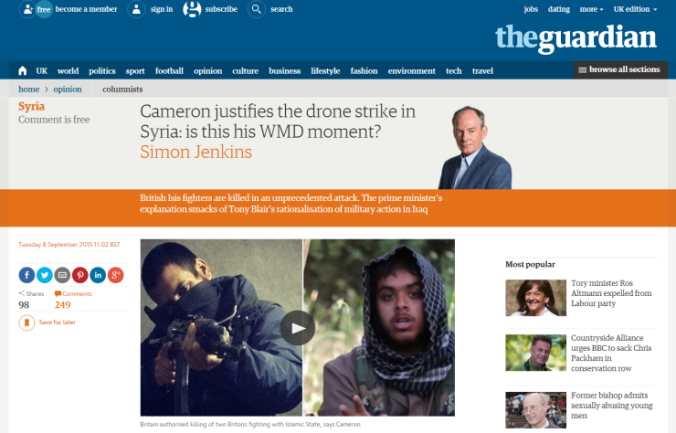From a new contributor, Josh Hughes
Members of the US-led coalition fighting Islamic State (IS) in Iraq and Syria, political and defence commentators, and retired military figures have been talking about ‘boots on the ground’, and whether coalition members should begin a large-scale ground offensive against IS, in addition to the ongoing air-strikes. Some, including NATO’s former Supreme Allied Commander in Europe, Admiral James Stravidis are advocating a significant role for coalition ground troops, in conjunction with the Kurdish Peshmerga and the Iraqi Army. The idea of a ground intervention results from the failure of the Iraqi army to stop the summer advance of IS in Iraq, and the inability of the western-backed rebel groups in Syria to contain IS and Jahbat Al-Nusra, the al-Qaeda affiliate in Syria, whilst fighting the Assad regime.
IS has managed to take and hold ground in Syria because there is no rebel opposition as effective as itself, and the Syrian Army are not aggressively targeting IS. The presence of IS means the west has targets other than the Assad regime, increasing the likelihood of regime survival.
Therefore, President Assad can play a long game, and remain in power. In Iraq, the IS rapid advance was accelerated by the Iraqi army and police fleeing in June, resulting in little resistance. Thus, the State forces one would initially hope to fight IS were not doing so, through acquiescence, or inability.
Thus, until local forces are in a position to fight IS effectively, there is an issue of how to continue fighting IS on the ground. Peshmerga backed by coalition airstrikes, weapons and training have so far been able to push back IS a limited distance, and contain their advances in Iraq, but not strike any decisive blows. Without rolling them back, IS territory could become what the Jordanian Foreign Minister describes as ‘Extremist-stan’.
There are fears that their territory could become, a terrorist safe haven and training ground, as with Afghanistan in the 1990’s and Somalia since the civil war.
Therefore an additional factor may be needed to swing the fight definitively against IS. However, the political will does not exist in coalition countries, due to war weariness, and fears of retaliation by IS for an intervention with ground troops, thus more creative options could be explored. Admiral Stravidis advocates a multi-force attack on IS, with Peshmerga engaging IS in the North, the Iraqi army engaging IS in central Iraq, and Coalition ground troops engaging IS in Syria, not the Syrian rebels which are currently being trained. Such an intervention is unlikely to occur, however. Intervention in Syria will inevitably lead to being sucked into their civil war, which political leaders are opposed to. It is this reason which also removes the possibility for States intervening to create ‘buffer-zones’, which some have advocated.
This would involve armies taking small areas in IS and Assad-controlled territory for civilians to escape conflict within, not only would this risk mission creep, but it also reminiscent of the failed safe-zones of Srebrenica. Alternatively, Afzal Ashraf of the Royal United Services Institute suggests using ‘boots with wings’, attacking IS with coalition paratroopers to push IS back, with Iraqi forces and Peshmerga holding the ground and fighting any IS insurgency remaining in towns.
In all three options, massive amounts of (currently non-existent) political will would be required, along with determination to intervene against public opinion, and are therefore they are unlikely to happen without a significant change of circumstance.
Most importantly, however, coalition ground troops are not wanted to fight in either Iraq or Syria. The Iraqi Prime Minister, Haider al-Abadi, stated at the beginning of October that defeating IS in Iraq could be performed by the Iraqi’s themselves with collation airpower. In Syria it is more complicated, but foreign troops are not wanted by commanders of the Free Syrian Army, unless they are committed to removing Assad as well as IS. Thus Stravidis’ idea must find another local force to take the place of coalition ground troops.
Kurdish fighters in both Syria and Iraq are well-motivated and have been pushing back the IS advance, with help from coalition airstrikes. However this has widely been acknowledged as not enough to defeat IS. Whilst there may be a large number of Iraqi-Peshmerga fighters, the Regional Kurdistan Government are unwilling to commit to advances outside of Kurdistan. Whereas Syrian-Peshmerga fighters are willing to take the fight to IS, but do not have the numbers, or equipment to deal decisive blows. Indeed, in the currently under-siege city of Kobane, the Kurdish fighters are unable to halt the IS advance through lack of heavy weaponry to defeat IS tanks and artillery, stolen from the Syrian and Iraqi armies.
However, Iraqi-Peshmerga and now being allowed by Turkey to reinforce and rearm the Syrian-Peshmerga in Kobane. This may stem the IS advance into Kobane, but does not take the fight to IS in their territories of central Iraq and Northern Syria.
In terms of ‘moderate’ rebel groups in Syria, they are being taken out of Syria to be trained in Turkey, after initial reports that training was to be carried out in Saudi Arabia. Rebels have also been trained in Jordan by the CIA, and are reportedly re-entering the Syrian battlefields. Thus, whilst the West can hope these rebel groups will both push back IS, and topple the Assad regime, they are an unknown quantity until they return to the battlefield, and therefore cannot yet be brought into an anti-IS strategy.
During the Islamist insurgency phase of the Iraq war, with many attacks performed by the group which preceded IS, al-Qaeda in Iraq, lots of Islamist and Shia militia fighters were pushed out of Iraq by tribal militias and the Iraqi army. In terms repeating the ‘Sunni Awakening’ of 2005, where Sunni tribes fought against al-Qaeda to liberate their towns, the opposite has been happening, to the benefit of IS. The IS rapid advance was accelerated by having little to no resistance from Sunni tribes, some of whom are supportive of IS.
This is because, the Shia-dominated Malaki government, security and intelligence services disenfranchised Sunni parts of Iraqi society by focussing on Shia issues, and reneging on promises to employ parts of the Sunni tribal militias and absorb them into State organs. This grievance of the Sunni minority resulted in at least tacit support for IS by many Sunnis, with IS being a mostly Sunni group, and many would rather risk rule under IS than accept a poor deal from the Malaki government. Attempts in the last weeks of the Maliki government to arm Sunni tribes to fight IS failed. However, more recently, several tribes have been cooperating against IS, after witnessing their brutal rule.
The El Bayaa tribe have been fighting with Kurdish forces in the North, and several tribes have been cooperating with Government forces. The Jaghaifa and Albo Nimr tribes in Anbar have been cooperating, along with groups such as Albu Alwan, Albu Fayad, Albu Esa, Albu Shaban and Albu Khalifa. If these tribes continue to cooperate, it is possible that their militia fighters could act as the ground troops to expel IS from central Iraq with coalition air support.
Despite initially failing to fight IS adequately in the summer, the Iraqi army could have a place in removing IS. Following their disintegration, the Iraqi army has been staging a significant turn-around. The 17th division has pushed IS from Baghdad, and beyond some suburbs. The army is being re-organised with Saddam-era officers brought in to replace the inexperienced young officers who fled the IS advance. Whilst this may not be an ideal situation, it is expected to go some way towards producing a well-functioning Iraqi army capable of taking the fight to IS. Thus, whilst Peshmerga fighters concentrate on removing IS from the North of Iraq, Sunni militia fighters, in conjunction with the re-constituted Iraqi army can expel them from central Iraq. Thus at the moment coalition ground troops are not needed in Iraq, and will not be needed if the mix of Peshmerga, Sunni militia and Iraqi army can defeat IS in Iraq.
Syria is more complicated, as any intervention would probably drag participating States into the Syrian civil war, is unlikely to happen.
Therefore, Syria-Peshmerga are likely to be helped by the West to fight IS in the North. With Iraqi-Peshmerga reinforcements aiding their Syrian cousins in Kobane, it could be facilitated for both Peshmerga to move further into Syria to fight IS, should they be successful in liberating Kobane and pushing IS back. As the ‘moderate’ rebel groups will continue to return from training in other countries, they will hopefully enable a larger response to IS in Syria, though this will likely be mitigated by rebels also fighting the regime.
Thus, whilst there is a feasible opposition in Iraq to IS, there is not in Syria. If we assume that a politically risky intervention by foreign powers will not happen, only the Peshmerga and rebel groups are willing to fight IS. The Syria army are unwilling to fight IS, because if they crush IS, every rebel group who was fighting IS will turn their fire on the regime, creating a lower likelihood that the Assad regime will survive.
Therefore, whilst it is possible that a multi-force offensive on IS in Iraq could be successful, there is less likelihood of success in Syria as there are simply less forces to fight it. Ergo, IS could feasibly continue to exist in Syria for some time, unless the Syrian-Peshmerga and rebel groups can defeat them, or the Iraqi multi-force offensive continues into Syria to remove IS completely.
In addition, although there was criticism of their employment during the Iraq war, Private Military Contractors (PMCs) could be employed in limited humanitarian roles where anti-IS forces cannot act, as suggested by former-Blackwater CEO Erik Prince. PMCs could be tasked with specific goals, such as evacuating civilians for endangered towns, aid convoys, or defence of strategic positions where there are gaps in anti-IS lines or capabilities.
As PMCs work for those with the largest cheque book, they would not necessarily have to work for a government in their action, they could be funded by rich Syrians, Iraqis and Kurds, or even charities. In 2005, Sam Bells’ ‘Genocide Intervention Network’ of college students and volunteers came very close to hiring a PMC to monitor the situation in Darfur. The leap from a charity attempting to monitor a conflict through a PMC, to a group protecting civilians through a PMC is not great.
Whilst some will feel the employment of PMCs into the campaign against IS is morally and ethically wrong, there is a role which they could play, and could relieve civilian suffering if played well. However, this would require a significant change in the process of warfare, with wealthy individuals and groups engaging directly in conflicts. As there have been no indications of such action so far in this conflict, it is unlikely, but not impossible, that such a private intervention could happen.
In conclusion, there is currently not a need for coalition ground troops in Iraq. Kurdish Peshmerga in the North, and Sunni militias cooperating with the Iraqi army in the centre of Iraq could potentially push back IS with assistance from coalition air power.
However, in Syria, the defeat of IS requires Syrian-Peshmerga and coalition-trained rebel groups to take on both IS and the Assad regime simultaneously, thus there is a lower likelihood of success.
This could create a need for extra anti-IS troops, which are unlikely to be Western, as the West wishes to avoid being dragged into the Syrian civil war, thus the anti-IS force in Iraq could feasible advance into Syria to remove IS, and then withdraw.
Additionally, there may be a role for PMCs to play in the fight against IS, but to avoid the controversies of the Iraq war, they should be limited to specific humanitarian goals, or temporarily filling in holes in the anti-IS forces. Thus, as the situation stands at the moment, there is no need for coalition ground troops to be deployed into either Iraq or Syria to fight IS, but dealing with IS in Syria may require more force than can be amassed by Syrian-Peshmerga and moderate rebels.



